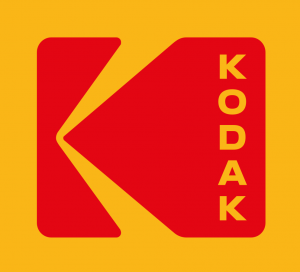
Since the outbreak of Covid-19, many companies have been forced to adapt in order to survive. With so much change and uncertainty due to the pandemic, the role of packaging in marketing strategies must not be overlooked, especially given that – according to a recent survey by Ipsos – 72% of consumers cite the design of a product’s packaging as a factor that influences their purchasing decisions.
Advances in digital printing are enabling brands to experiment with marketing in more creative ways than ever before. New Statesman Media Group, in partnership with Kodak, reached out to 108 consumer goods leaders responsible for packaging, design and marketing to find out what the most important considerations are dictating packaging strategy and how marketing considerations have changed as a result of Covid-19. The lessons drawn from the results are outlined in a co-authored white paper: ’What digital printing means for the next generation of packaging: 7 key lessons for brand owners’.
The survey results are unequivocal in demonstrating that brands are increasingly aware of the new opportunities digital print provides. For brand owners, finding ways to engage with consumers by creating a link between the physical package and the digital realm is a top priority. From the scanning of item-specific QR codes to virtual reality technology, digitally printed packaging can be used as a gateway to starting a dialogue with consumers. In Japan, for example, Suntory recently printed variable QR codes on the inside of beer cartons, which allowed customers to earn points for a range of prizes, redeemable online.
Brands must also find ways of increasing transparency in the supply chain, particularly at a time when the pandemic has led to a surge in counterfeit goods. Special inks and barcodes on packaging can be used to track products and ensure authenticity.
“Transparency is vital in a post-Covid-19 world,” explains printing industry analyst Marco Boer, VP at IT Strategies. “We need to know where our products came from and how they got to us. Digital print has the ability to provide this data and protect brands from grey marketing, counterfeiting or theft.”
Personalisation features heavily throughout the survey as an important consideration for new marketing strategies. It is no longer enough, though, for brands to carry out customisation reminiscent of the pioneering ‘Share a Coke’ campaign of 2011, which featured hundreds of different names printed directly onto drink cans.
“Over the past decade or so there has been a seismic shift in the market from a mass consumer approach where marketing was by block, to the agile personalised approach digital has successfully unleashed,” says editor of Packaging Today Matthew Rogerson. Today, brands like Milk-Bone have been carrying out more sophisticated personalisation, enabling their customers to order dog treat boxes featuring a picture of their pet and its name on the package.
While low cost and high quality are, unsurprisingly, the base expectation when selecting a printer, brands are also concerned with reducing time to market and operating with increased agility. Since printing plates do not need to be changed, digital printing enables a faster time to market.
The survey reveals that the outbreak of Covid-19 has resulted in brands carrying out more online advertising and short-run “opportunistic” activations as part of their marketing strategy.
“The pandemic has been an accelerant of trends that were already in play,” explains head of Zumbiel Packaging Ed Zumbiel. “In the last five months, we have moved forward five years.”
Kodak provides brands with the tools to take advantage of the benefits of digital print, but with a unique added component.
“The sheer volume of digitally printed packaging that can be produced through our solutions allows clients to get to market faster, with more of their product than ever before,” explains SVP of digital print at Kodak Randy Vandagriff.
Vandagriff cites the example of Kroger Home Chef, which has been updating the packaging of thousands of its ready-to-cook home meal kits with nutritional information every two weeks. On traditional printing presses, this simply would not have been possible.
Going forward, this ability for customised print at unprecedented scale and speed presents brands with an exciting opportunity to connect with consumers. The question is: will they take it?


